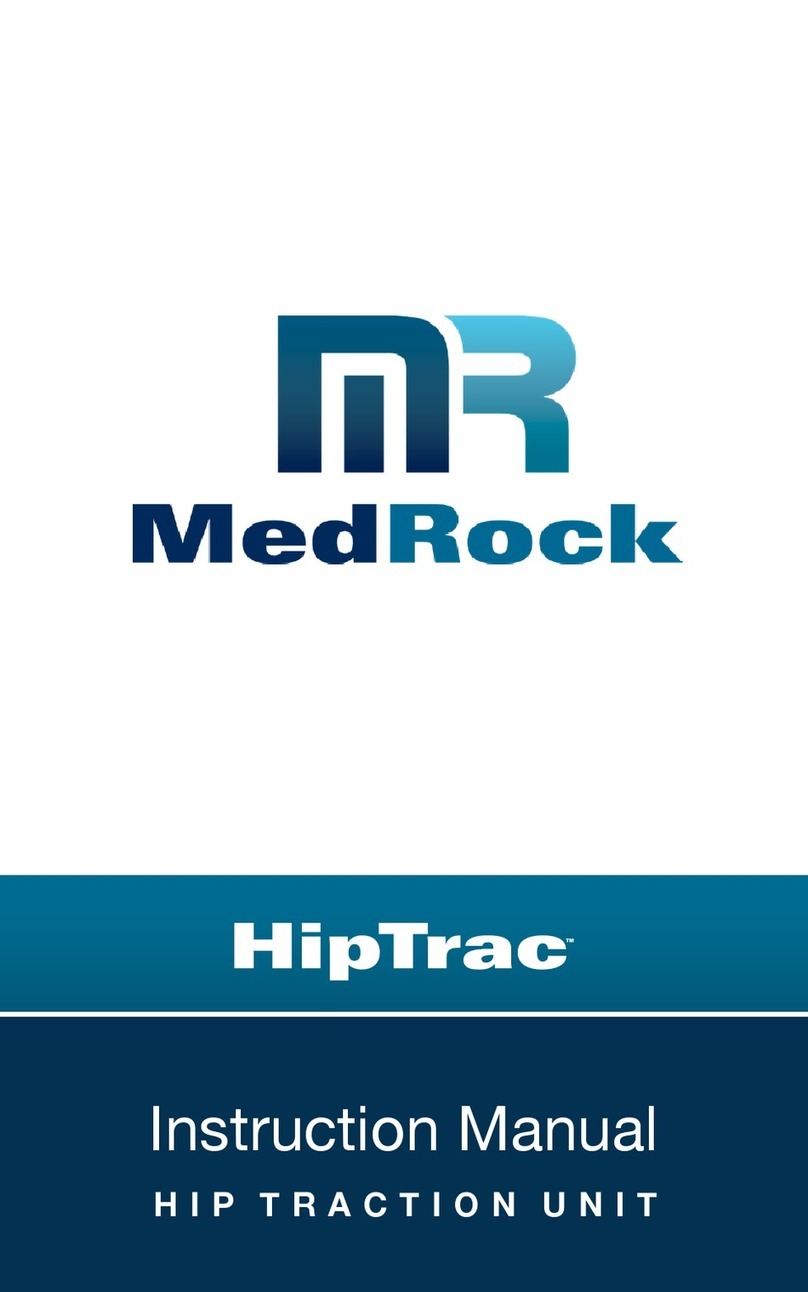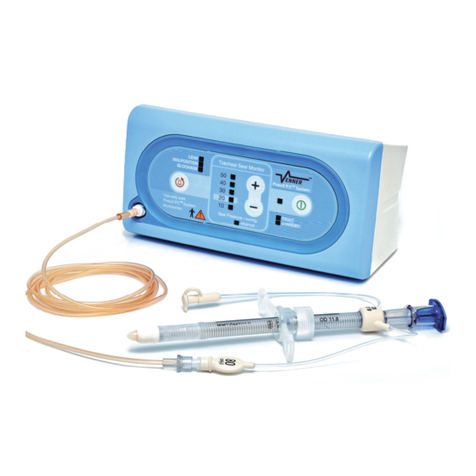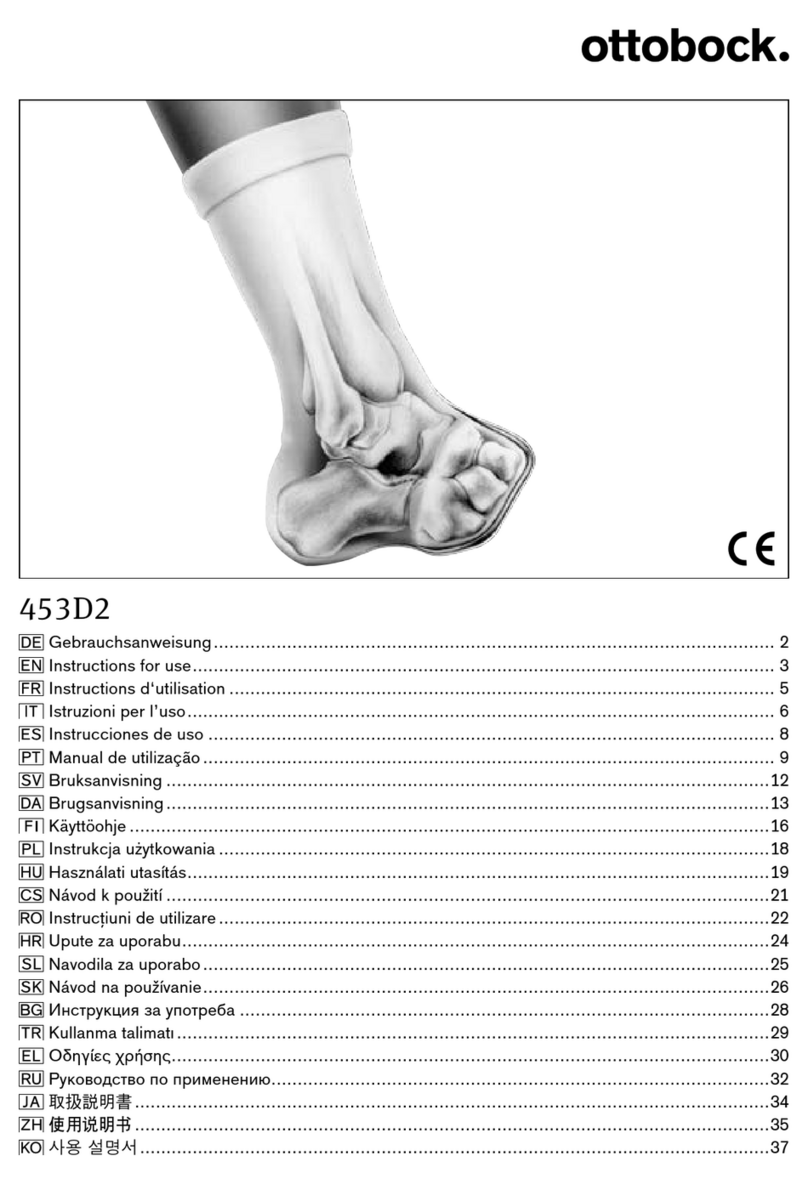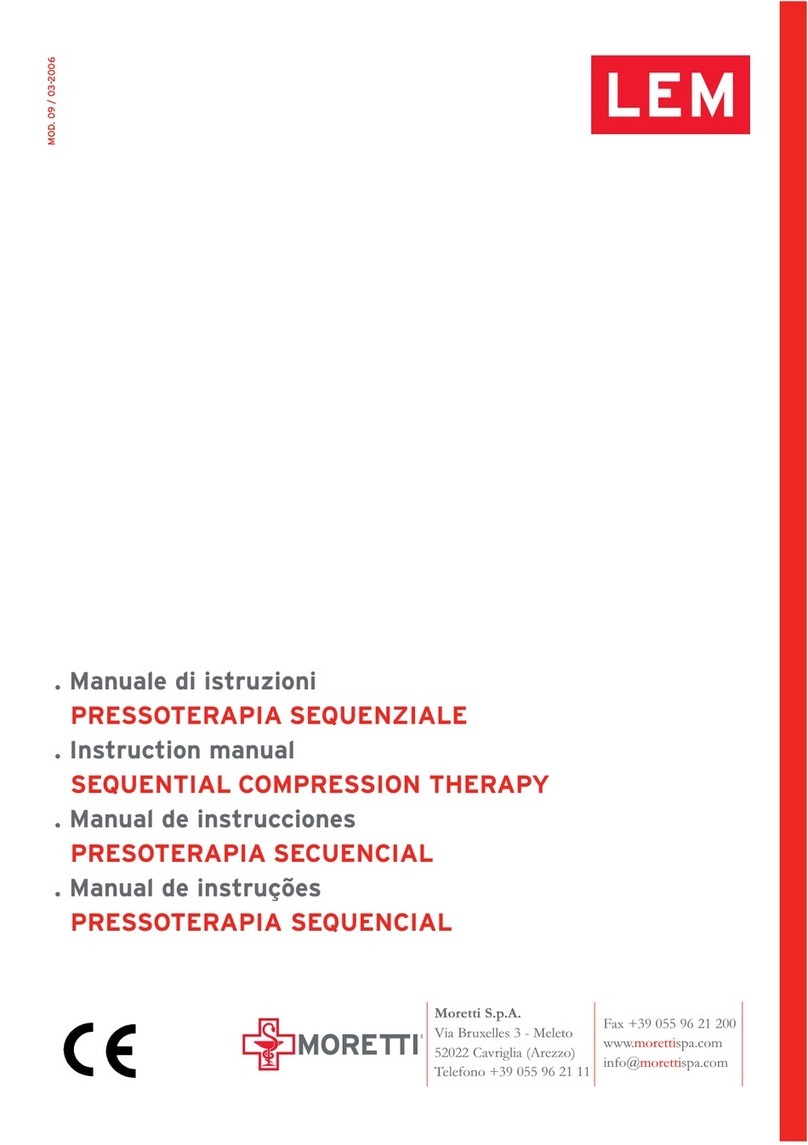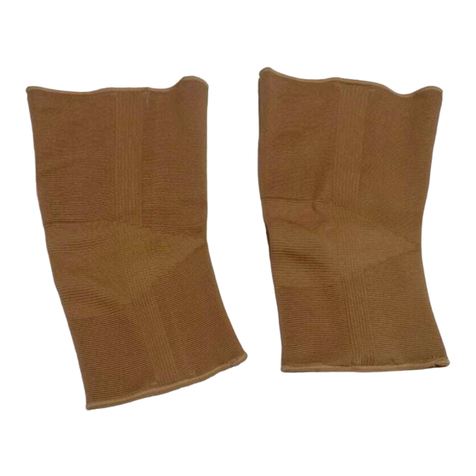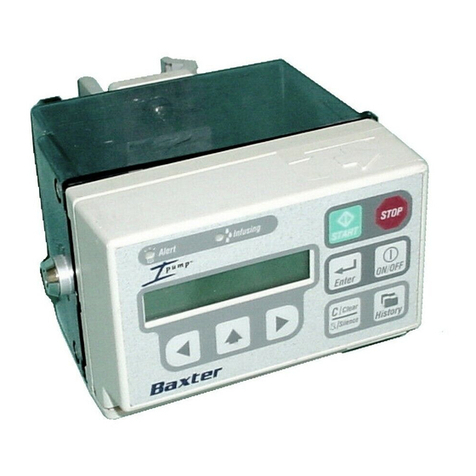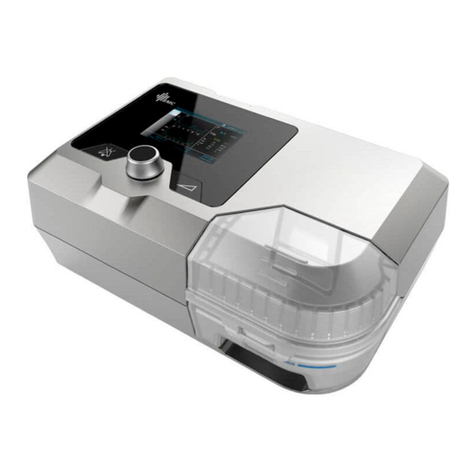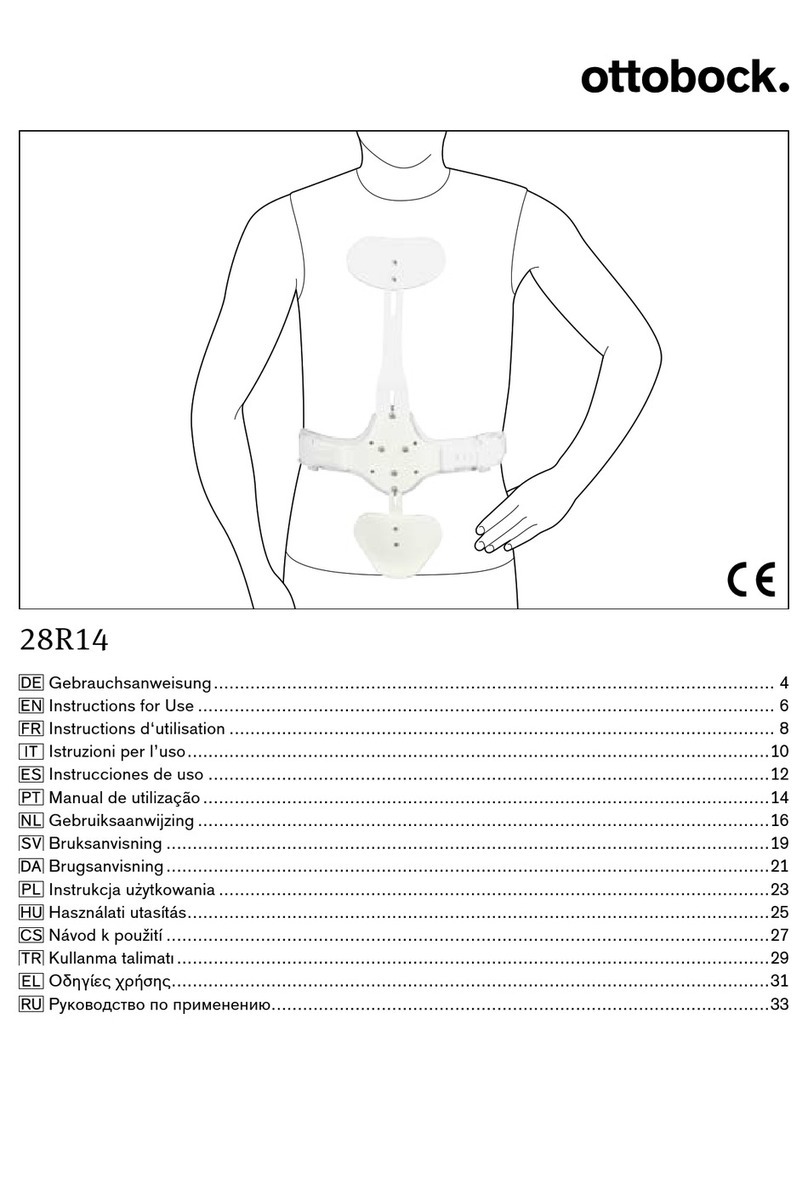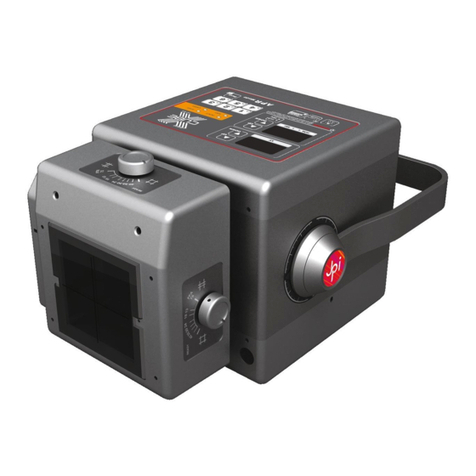MedRock HipTrac User manual

Instruction Manual
HIP TRACTION UNIT


Instruction Manual
3
CONTENTS
Letter to Patient ............................................................ 4
Introduction ................................................................... 5
How the HipTrac Works................................................. 6
HipTrac System Components ....................................... 7
HipTrac Device Features and Controls.......................... 8
Notes on Hip Traction and the HipTrac ...................... 10
Getting Started ........................................................... 10
Using the HipTrac........................................................ 11
Sample Treatment Protocol......................................... 13
Care for Your HipTrac .................................................. 14
Warranty Information ................................................... 15

Instruction Manual
4
LETTER TO PATIENT
Thank you for choosing HipTrac to help you achieve a more active lifestyle.
Please read this instruction manual carefully before using your HipTrac.
You can also watch the online instructional videos at www.hiptrac.com.
The instructions are very specic and will show you how to use and care for
your HipTrac.
NOTE: Please read the information on precautions, indications, and
contraindications in this manual before using the HipTrac (Page 10).
If you are working with a health care provider such as a physical therapist,
physician or chiropractor, it may be benecial to consult with them on how
best to use your HipTrac for your specic situation. They possess technical
knowledge of the HipTrac as well as being familiar with your specic condition.

Instruction Manual
5
INTRODUCTION
There are millions of individuals suffering from hip (acetabulofemoral) pain
related to a variety of conditions, such as osteoarthritis, femoral acetabular
impingement and labral tears. For over a hundred years, the rst and most
widely used hands-on treatment has been long axis hip traction. Traditionally,
a health care provider uses his/her hands to manually perform the technique
of grasping the patient’s leg and distracting the hip. This has been proven
very effective in reducing pain and improving joint mobility.
This technique also creates a muscular relaxation around the hip and lower
back even in hips that are completely normal and healthy. This is why a lot
of elite and professional athletes use hip traction after intensive training. It
assists in their recovery and helps them go into their next training session
with less tension and tightness.
Hip traction provides natural pain relief while stretching tight tissues around
the joint. This allows the individual to improve their mobility and increase their
activity level with less pain.
Some individuals that benet from hip traction may begin to reduce their use
of pain medications. As the individual increases their activity level with less
pain, they will then be able to perform more therapeutic exercise to make
gains in strength, mobility, and weight loss. These gains have been shown to
also further improve conditions of the hip and increase functionality.
The HipTrac is a light-weight, portable device that replicates this same
hip traction at home. Until now, there has not been an effective way for
patients to easily and safely perform this technique without the assistance
of another person.
The HipTrac will help many individuals with hip pain signicantly improve their
quality of life.

Instruction Manual
6
HOW THE HIPTRAC WORKS
Your HipTrac is a pneumatic device that provides home hip (acetabulofemoral)
traction in an easy to use, comfortable, and effective way. It is designed to
replicate traction treatment that patients receive from a health care provider.
The HipTrac is designed to use traction to relieve pain, increase joint mobility,
and relax surrounding musculature. You do not need a health care provider to
instruct you in use of the HipTrac. However, if you are working with a health
care provider, discuss any recommendations in regard to treatment duration,
intensity and usage position.
It is important to understand that pain is a symptom of an underlying condition,
and the HipTrac device has no curative effect on the cause of your pain.
Therefore, home hip traction is not a substitute for proper medical evaluation
and treatment, but rather a supplement and/or extension to them.
CAUTION: A slight stretching sensation and/or some mild
discomfort may occur during the use of this traction device.
However, at no time should you feel any pain. If pain is increased
in your foot, ankle, knee, hip, lower back or any other location,
immediately discontinue the use of this traction device and seek the
counsel of a medical professional and/or your health care provider.
Improper application of traction may result in additional injury or may
aggravate a pre-existing medical condition.

Instruction Manual
7
HIPTRAC SYSTEM COMPONENTS
The HipTrac system is provided with:
Use only HipTrac replacement parts.
Order from MedRock, Inc. at 1 (503) 719-7775.
A
B
B
D
E
F
G
H
C
A. HipTrac
B. Knee/Ankle Binding
C. Slide Carriage
D. Support Legs
E. Foam Pad
F. Hand Pump with Gauge
G. Pull Strap
H. Instruction Manual

Instruction Manual
8
HIPTRAC DEVICE FEATURES AND CONTROLS
Hand Pump and Gauge
The supplied pneumatic hand pump adjusts the force of the traction
delivered. As you pump air into the device’s pneumatic cylinder, the gauge
indicates the amount of air pressure in the cylinder. This pressure correlates
to the force being applied to your hip.
The hand pump includes a release button that releases air from the cylinder
and brings the HipTrac into neutral position.
The release button may also be used to assist in intermittent traction.
NOTE: In an emergency, fully depress and hold the release button until
traction device is in neutral position.
Slide Carriage
Multiple openings for which the hook of the binding inserts for users of
different heights.
Pneumatic Cylinder
The cylinder moves the slide carriage within the HipTrac.
Support Legs
The HipTrac can be used in four positions: 0 degrees closed or using the
support legs at 10, 20, and 30 degrees.
Pull Straps
The pull straps are used to pull the HipTrac into your body when getting in
and out of the HipTrac.
Continued on next page.

Instruction Manual
9
Bindings
While seated, begin with wrapping the Ankle binding around lower leg just
above ankle bones. The lowest edge of the wrap should be right above
the two ankle bones. The hook in the back of the ankle binding should be
centered to your achilles tendon. After securing tightly, stretch and secure the
two elastic velcro bands around the ankle as well. These will need to be tight
enough to prevent the binding from slipping during use, but not so tight that it
creates discomfort.
Next, wrap the Above-The-Knee (ATK) binding around your leg directly above
your knee. You will want this to be secured tightly right above your patella
(knee cap). Then, stretch and tightly secure the two elastic velcro bands
around this binding. Complete the application by connecting the hook on
the adjustable strap to the black plastic D-ring at top of ankle binding. Then,
straighten your leg and tighten the adjustable strap between the ankle and the
knee binding.
When rst using the HipTrac, the bindings may slip slightly but this is normal.
They should not slide off or create any discomfort. If uncomfortable or too
loose, remove bindings and start from beginning.
(See website for link to instructional video.)

Instruction Manual
10
NOTES ON HIP TRACTION AND THE HIPTRAC
Hip traction has helped in the treatment of many conditions at the hip.
Traction may be used to treat signs and symptoms associated with the
following hip conditions:
• Osteoarthritis
• Femoral Acetabular Impingement
• Labral Pathology
• Pain
• Joint Stiffness
• Muscle Tightness
Never use traction to treat the following conditions:
• Fractures
• Infections and Inammatory Diseases
• Malignancy
• Rheumatoid Arthritis
• Lumbar Spinal Cord Compression
GETTING STARTED PRIOR TO USE
Carefully read the instruction manual and watch all the instructional videos on
our website prior to using the HipTrac for the rst time.
Like any new product or movement, you should always begin slowly and
gently until you become very familiar with its use. See page 13 for “Sample
Treatment Protocol”.
* Device should be returned to room temperature if stored over
100 degrees F or below 50 degrees F.
• Traumatic or Acute Injury
• Any condition that can be
aggravated by movement
or in which hip traction is
contraindicated
• Pre-Surgical Conditions
• Compression Conditions
• Any condition with indications
for manual long axis traction.
Continued on next page.

Instruction Manual
11
Assembly
No assembly required other than securing the bindings to your knee and
ankle, and connecting to corresponding opening in slide carriage. There is
also a foam pad to place between your buttocks and the device to make it
more comfortable. Both the foam pad and bindings t easily back into the
HipTrac when not in use.
Set-Up
Place the HipTrac on a rm, at, non-slippery surface. Make sure you have
enough space to lie down fully and that the device is not resting on top of the
air pump hose.
You may also want a pillow for your head for comfort. Have bindings readily
available to you.
USING THE HIPTRAC
1. Secure bindings to your ankle and knee. For directions, refer to
Page 9 under “Bindings”. You may also watch the instructional video
on our website, www.hiptrac.com.
2. Open the HipTrac and place support legs into one of the four different
positions. There are three positions in which the support legs are placed
into the “shark teeth”, while the fourth position is when the unit is used
closed all the way. In this position, place a small towel at the outer edge so
that the air hose is not being crimped.
3. Lie down and place your leg, with bindings attached on the solid plastic part of
the HipTrac, not yet in one of the holes. Use the pull straps to pull the HipTrac
into your involved buttocks, with pad in between, as tightly as possible while
reaching for the highest hook opening you can insert into. Ensure that you are
securely connected to the slide carriage and that the foam pad is still between
your buttocks and HipTrac.
4. Reposition your body so that you are comfortable and in the position
desired for use.
Continued on next page.
Medrock/Go.

Instruction Manual
12
5. Begin gradually pumping air into the cylinder until the desired amount of
traction force has been reached. Some individuals will feel stretch and/
or relief immediately, while others need to accumulate the effects over
multiple uses. Monitor the hand pump gauge making sure never to exceed
the amount of traction force prescribed by your health care provider.
6. Stop pumping when the recommended amount of traction force has been
attained, the hand pump will hold the pressure automatically.
NOTE: If traction force reading drops, it was probably caused by body
movement, repositioning, or unit movement. To correct, slowly pump
back to the desired traction force reading and relax.
NOTE: Should you pump beyond your recommended traction force,
depress and hold the air-release button immediately until desired
amount is obtained.
7. After you have reached your desired traction force, begin timing your
traction force to monitor the traction and rest cycle as per your
desired protocol.
8. After the traction treatment is complete, press the release button to
release the traction. While holding the release button depressed, some
people will bend their knee and gently assist the slide carriage back to its
original position.
9. Relax for a couple of minutes before removing your leg from the HipTrac.
10. To disconnect the ankle binding from the slide carriage, rst remove foam
pad from between your buttocks and HipTrac. Then use pull straps to pull
HipTrac towards your buttocks while bending your knee slightly. Maintain
pressure towards you with pull straps as you simply straighten your knee
and the hook should easily lift right out of the HipTrac. Once out, you can
rest your heel on the HipTrac for a few minutes if needed and eventually
roll away from the HipTrac.
NOTE: In an emergency, fully depress and hold the air-release button
until traction is in neutral position.

Instruction Manual
13
SAMPLE TREATMENT PROTOCOL
If the initial goal is pain relief then most individuals look to perform traction in
as close to what we call the “loose-pack position” as possible: 30 degrees
of exion (up from oor), 30 degrees of abduction (leg moved out to side) and
leg relaxed in as much natural available external rotation as possible
(toes turned out).
If your goal is to increase stretch to the restricted joint capsule and gain range
of motion, most individuals move towards what we call the “closed-pack
position” of the hip: more extension (closer to oor), while still maintaining
the abduction and external rotation for comfort. Some people can improve
this stretch even further by using the HipTrac in side-lying so that they can
perform traction with their hip extended behind them and rotating internally
slightly (see videos at website and HipTrac YouTube Channel).
Overall, we encourage each person to “discover” what angles/positions
in which they obtained the greatest relief and capsular stretch as desired.
Oftentimes, individuals will feel greater mobility changes and pain-relief in a
lower position. In many cases, individuals with hip osteoarthritis do not follow
one strict protocol for their specic needs so we encourage you to discover
the most pain-relieving and capsular stretching positions.
DAY 1-7
1 minute hold under traction at 20-30 PSI followed by release for 5-10
seconds. You don’t have to release all the way down, just half way.
Repeat 6-8 times.
DAY 8-14
Begin to increase to 1-3 minute holds at 30-50 PSI, 5-10 second
releases, Repeat for a total of 12-15 minutes of traction time;
choose the cycle based on comfort.
DAY 14+
1-5 minute holds. Progress gradually over time to as high as (40-100+
PSI) as youfeel comfortable for total of 15-20 minutes of traction time,
with 5-10 seconds in between. Choose the duty cycle based on comfort.
We encourage you to use it regularly in the presence or absence of pain to
maintain consistent capsular mobilization/stretching and also when any are-
ups occur from harder physical days at work or home as needed.
Continued on next page.

Instruction Manual
14
CARE FOR YOUR HIPTRAC
The HipTrac is designed to be light-weight, portable and durable.
It is built to provide you many years of effective hip traction.
Cleaning
Use only mild detergents to clean the HipTrac.
Troubleshooting
1. The HipTrac features a high quality gauge designed to be extremely
accurate. If traction force reading drops, it was most likely caused by body
movement or repositioning. To rectify, slowly pump back to the desired
traction force reading.
2. If you are having trouble securing ankle and knee bindings, refer to
Page 9 under “Bindings”. You may also watch the instructional video
on our website, www.hiptrac.com.
3. If the slide carriage is not moving higher, it may be because the air was not
depressed to bring the carriage back to the start position.
Storage
Store your HipTrac in a cool, dry place. Should the temperature of the unit
exceed 100 degrees F or below 50 degrees F, return to room temperature
before operating.
July 27, 2015 10:15 AM
Most individuals feel that they do not need to use it as often as time goes on
as there is an accumulation effect that occurs overall. When you rst use it,
pain relief only lasts minutes or while on it. As you progress, relief will began
to last longer and up to days after use so you may be able to reduce their
use to 2-4 times per week, rather than 10-20 times per week. Again, we
encouraged you to nd your optimum position, amount of time and traction
force when using the HipTrac. If you are working with a healthcare provider,
always consult with them on the protocol that would work best for your
individual needs.
MedRock/Go.

101 SW MADISON, STE 9262
PORTLAND, OR 97207 USA
P: 1 (503) 719-7775
F: 1 (503) 719-7879
WARRANTY INFORMATION
MedRock, Inc. warrants your HipTrac to be free from defects in
workmanship and materials for a period of one (1) year from the date of
it being issued to you. MedRock, Inc. will repair or replace, at its factory,
any devices found to have become defective within the warranty period.
This warranty does not apply to accessories nor does it apply to units
that have been damaged due to misuse, or repaired or altered other than
by MedRock, Inc. at its factory.
This warranty is in lieu of any other warranties expressed or
implied. No person or entity is authorized to bind MedRock, Inc. to any
representation of warranty other than those specically set forth herein.

MEDROCK, INC.
101 SW MADISON, STE 9262
PORTLAND, OR 97207 USA
P: 1 (503) 719-7775
F: 1 (503) 719-7879
www.MEDROCK.com
Other manuals for HipTrac
1
Table of contents
Other MedRock Medical Equipment manuals
Popular Medical Equipment manuals by other brands
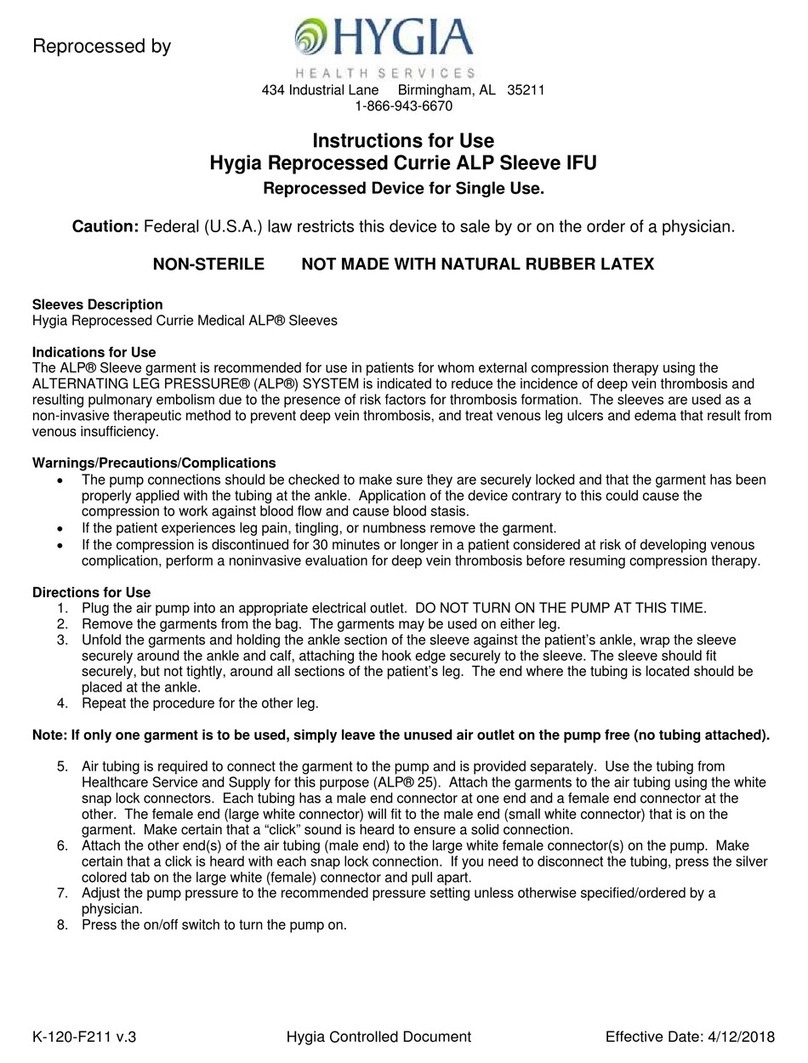
Stryker
Stryker Hygia Reprocessed Currie ALP Sleeve IFU Instructions for use
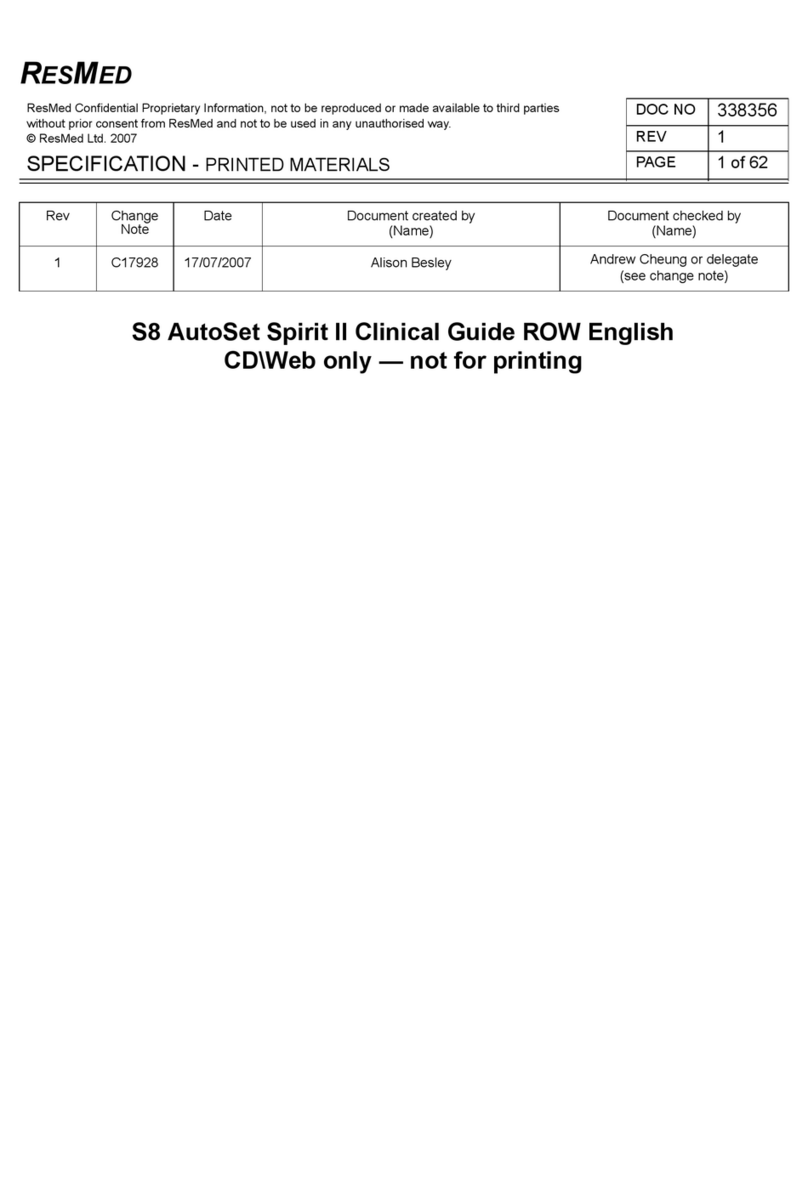
ResMed
ResMed S8 AutoSet Spirit II Clinical Guide

Sissel
Sissel Portal Pro Therapy Chair Instructions for use
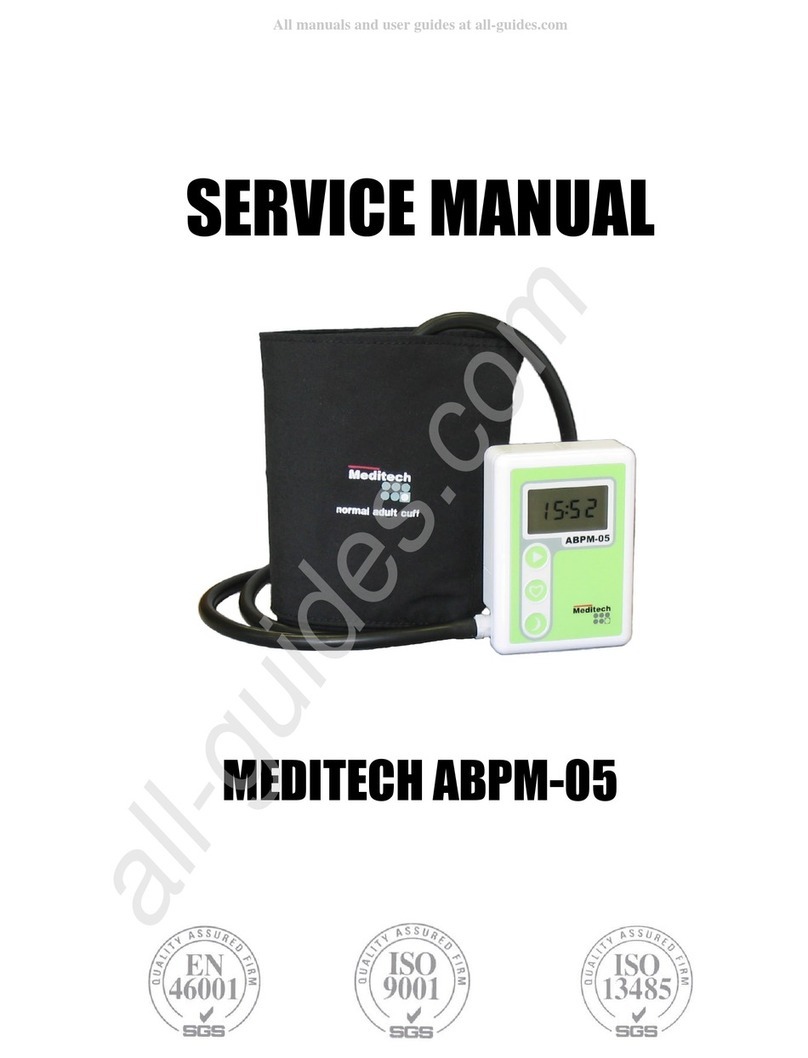
Meditech
Meditech ABPM-05 Service manual

CUSTOM ULTRASONICS
CUSTOM ULTRASONICS 20000 Operator's manual
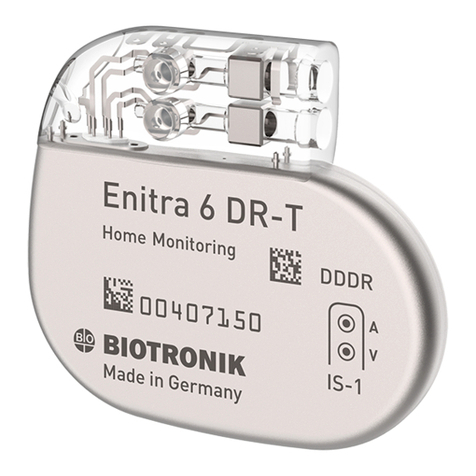
BIOTRONIK
BIOTRONIK Enitra 6 Series Technical manual
